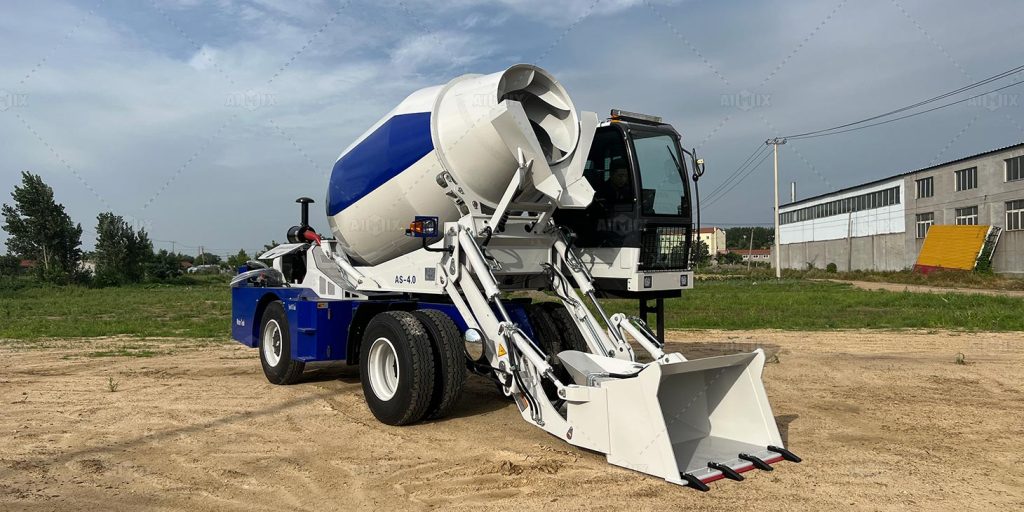Ethiopia’s construction landscape is buzzing with a new kind of energy, and at the heart of this transformation is a game-changing piece of kit: the self-loading concrete mixer. These all-in-one mobile batching plants are revolutionizing sites from Addis Ababa to emerging regional hubs, offering unparalleled autonomy. But for contractors and developers eyeing this upgrade, the million-birr question looms: where is the price of self loading concrete mixer headed? The trajectory isn’t linear. It’s a fascinating tug-of-war between global economic undercurrents and a uniquely Ethiopian growth story. Understanding this interplay is key to making a savvy investment that aligns with both your project pipeline and the nation’s infrastructural ambitions. Let’s decode the signals and forecast the financial roadmap for this essential equipment.
The Macro Squeeze: Global Pressures and Local Logistics
Before we even get to local demand, we have to acknowledge the external forces shaping the baseline cost. The price tag on a new self-loader is deeply susceptible to international market volatilities that are largely beyond local control.

Currency Flux and Supply Chain Friction
The Ethiopian Birr’s relationship with major currencies like the US Dollar and the Euro is a primary price driver. A weaker Birr directly inflates the import cost of these machines, which are predominantly manufactured overseas. Furthermore, global supply chain dynamics, from shipping container availability to port congestion, add layers of cost and delay. These logistical headwinds create a price floor that can be stubbornly high, irrespective of local market appetite.
The Rise of Tech-Integrated Manufacturing
Manufacturers are in a constant arms race to integrate more advanced features—telematics for fleet management, more fuel-efficient hydraulic systems, and enhanced safety interlocks. While this tech offers incredible operational dividends, it also contributes to a gradual upward creep in the manufacturing cost of new models. This trend towards premiumization means that the entry-level concrete mixer price in Ethiopia with modern standards will likely see a steady, incremental rise.

The Domestic Dance: Demand, Competition, and Economic Policy
This is where the Ethiopian narrative gets truly compelling. The internal market dynamics will ultimately determine how those global baseline costs translate into the final price you pay.
Infrastructure Boom and Scrappy Competition
The government’s relentless focus on massive infrastructure projects—from the Grand Ethiopian Renaissance Dam to new industrial parks—creates a colossal demand for efficient concrete production. This high-level demand exerts upward pressure on prices. However, a countervailing force is emerging: increased competition among concrete mixing equipment suppliers and a growing market for quality reconditioned units. This competitive landscape is starting to offer buyers more options and bargaining power.
Import Regimes and Financing Landscapes
Government policy will be a decisive X-factor. Shifts in import tariffs, taxes on construction machinery, and the availability of favorable financing or leasing arrangements can dramatically alter the effective purchase price. A policy push to incentivize mechanization in construction could introduce subsidies or tax breaks, effectively lowering the barrier to entry. The evolution of Ethiopia’s financial sector to offer more accessible equipment loans is another critical trend to monitor.
The Smart Money: Strategic Acquisition in a Fluid Market
So, what’s the actionable intelligence for a forward-thinking contractor? The future isn’t about waiting for a price crash; it’s about strategic positioning to maximize value.
The Depreciation Sweet Spot and Certified Pre-Owned
While new machine prices may hold firm or see modest increases, the secondary market presents a massive opportunity. As more self-loading mini concrete mixers enter the country, a robust pre-owned ecosystem is developing. Targeting a machine that is 2-4 years old allows you to capture the steepest part of the depreciation curve without sacrificing modern features. The key is seeking out certified reconditioned units from reputable dealers who offer warranties.
Total Cost of Ownership: The Ultimate Metric
Future-proofing your investment means looking beyond the sticker price. A slightly more expensive model with a proven reputation for reliability, low fuel consumption, and readily available spare parts will have a far superior Total Cost of Ownership (TCO) than a cheaper, unproven brand. Partnering with a supplier who has a strong service network and parts inventory within Ethiopia is no longer a luxury—it’s a core part of the financial calculation. In the coming years, the real savings won’t be found in a lower purchase price, but in a machine that stays productive and out of the repair shop.